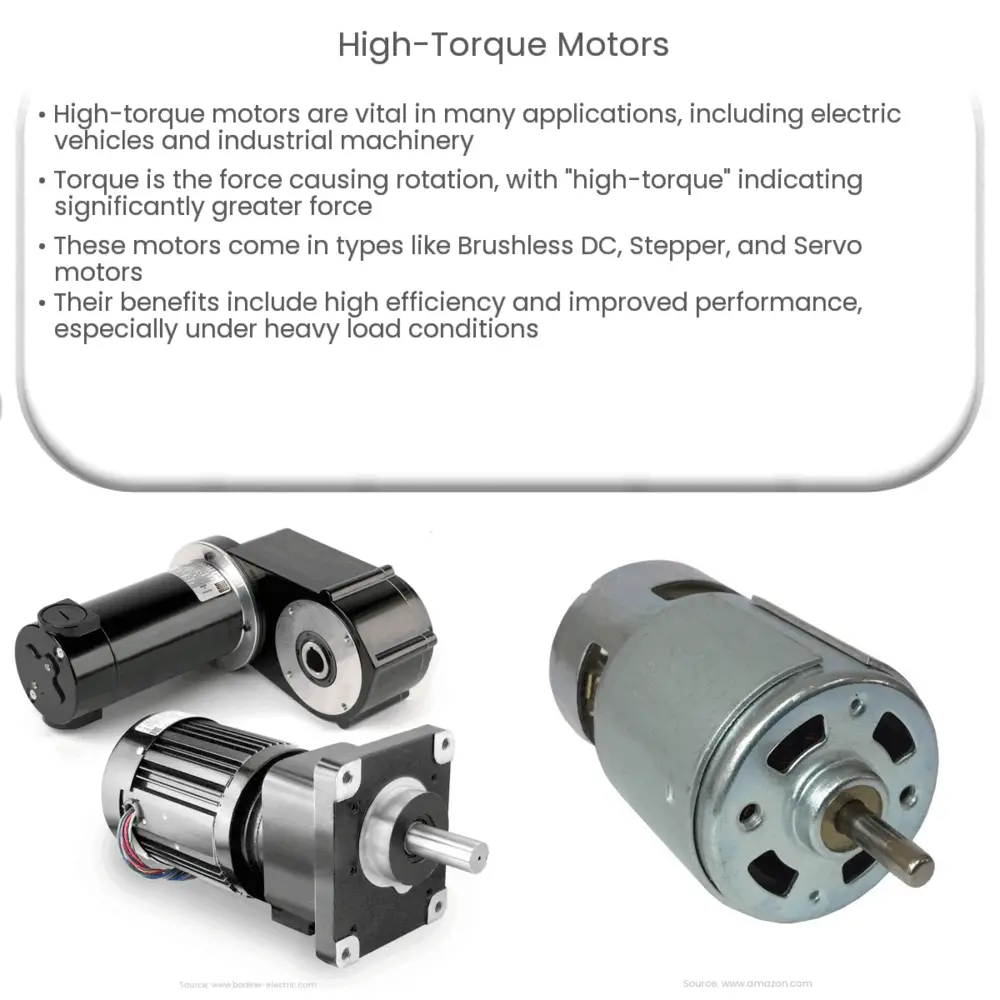Explore the importance of high-torque motors, their types, benefits, applications, challenges, and future in this comprehensive article.

Introduction to High-Torque Motors
High-torque motors are a key component in a multitude of applications ranging from electric vehicles and industrial machinery to household appliances. Their unique ability to produce a high amount of force, or torque, makes them instrumental in driving various systems and mechanisms.
Understanding Torque in Motors
In simple terms, torque is the force that causes rotation – the greater the torque, the greater the ability to turn things. The term “high-torque” is often associated with electric motors that provide a significantly higher amount of torque compared to their counterparts of similar size or power rating.
Types of High-Torque Motors
- Brushless DC Motors: Offering exceptional speed-torque characteristics, efficiency, and longer lifespans, brushless DC motors are frequently employed where high torque is required. They are most commonly found in electric vehicles, drones, and HVAC systems.
- Stepper Motors: Stepper motors provide precise positioning and repeatability, making them ideal for applications such as robotics and CNC machines. While they might not offer the highest torque values, they excel in applications requiring high torque at low speeds.
- Servo Motors: Known for their precise control of speed, position, and acceleration, servo motors can generate high torque relative to their size. They are commonly used in applications like robotics, automation systems, and CNC machinery.
The Benefits of High-Torque Motors
High-torque motors offer several key benefits that drive their broad adoption across different sectors. These include:
- High Efficiency: Due to their design and operational principles, high-torque motors are often more efficient than standard motors, particularly under heavy load conditions.
- Improved Performance: High-torque motors can enhance the performance of the device or machine in which they are installed, as they can drive higher loads and achieve faster acceleration.
Applications of High-Torque Motors
High-torque motors are employed in a wide variety of applications where high force and precision are paramount. Here are a few notable examples:
- Electric Vehicles: Electric vehicles need high torque to improve acceleration and climbing ability. The torque produced by electric motors is available from the start, contributing to the characteristic instant acceleration of electric vehicles.
- Industrial Machinery: Many industrial machines require high torque to move heavy loads or to perform high precision tasks. This includes CNC machines, conveyors, and lifting equipment.
- Robotics: In robotics, high-torque motors are essential for tasks requiring strength and precision, such as moving robotic arms or driving mobile robots.
- Home Appliances: Some household appliances like washing machines, air conditioners, and blenders utilize high-torque motors to provide the necessary power to perform their tasks efficiently.
Challenges and Solutions
While high-torque motors are advantageous in many ways, they are not without their challenges. High-torque operations can produce considerable heat, leading to thermal issues that may affect performance or cause component failure. Therefore, effective thermal management is crucial when utilizing high-torque motors.
In addition, the size and weight of high-torque motors can sometimes be a limiting factor, especially for applications where space is at a premium. To address this, manufacturers continue to innovate and produce compact high-torque motors that offer the same power output while minimizing the size and weight.
Future of High-Torque Motors
The future of high-torque motors is promising, particularly in the fields of renewable energy and electric vehicles. As the demand for high-performance, efficient, and eco-friendly systems grows, so too will the demand for high-torque motors. Advanced technologies like nanotechnology, new materials, and improved manufacturing processes will likely lead to further improvements in high-torque motor design, increasing their efficiency, power density, and overall performance.
Conclusion
In conclusion, high-torque motors represent an essential component in the modern technological landscape. Their ability to deliver high levels of force, coupled with their efficiency and performance, make them an integral part of a wide range of applications, from electric vehicles and industrial machinery to robotics and home appliances. Although they face challenges such as thermal management and size limitations, ongoing technological advancements promise to continue enhancing their capabilities and expanding their applications in the future. As we move towards a greener and more efficient world, the role of high-torque motors will undoubtedly become even more vital.

